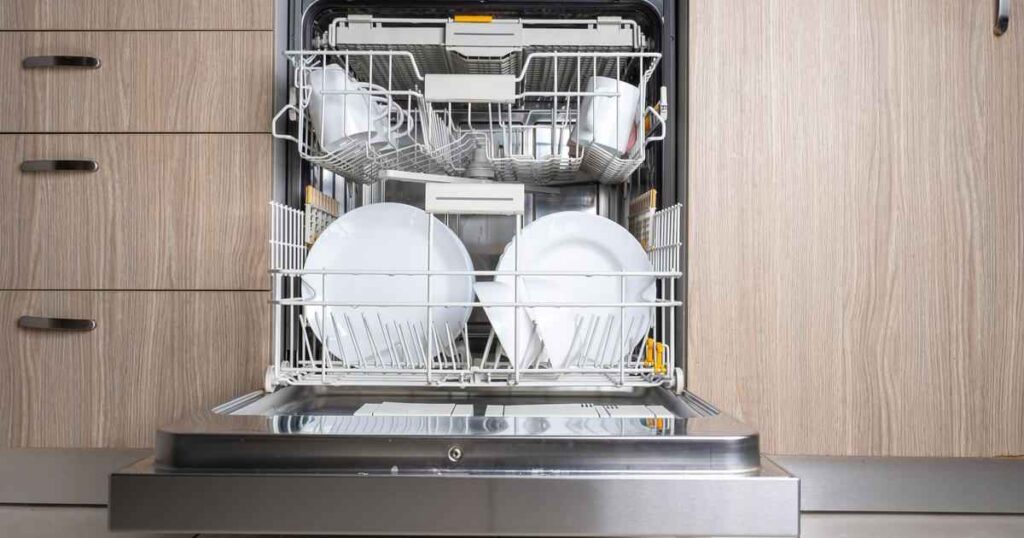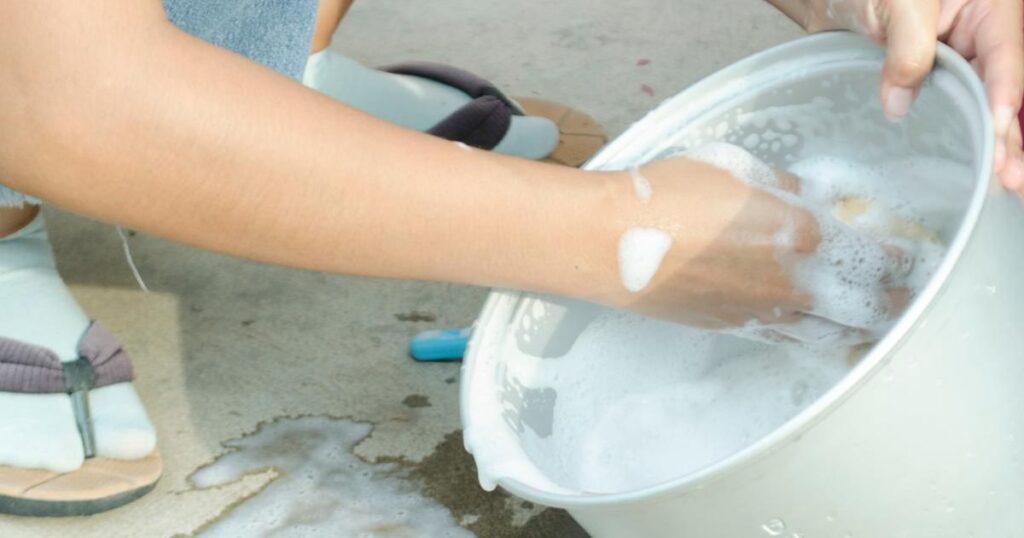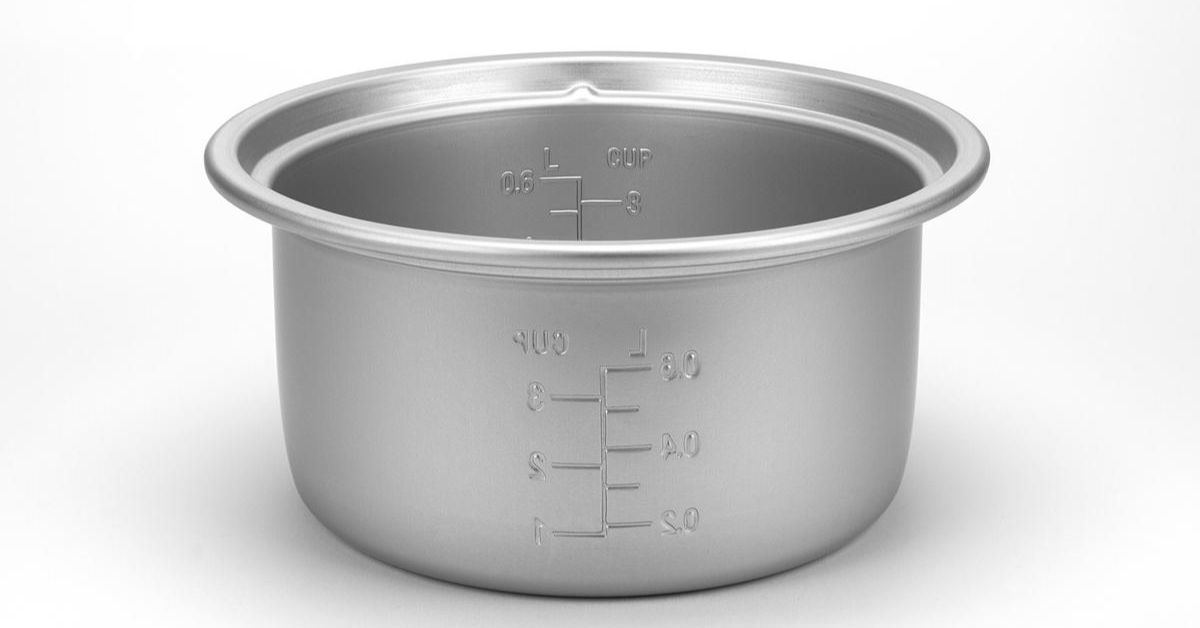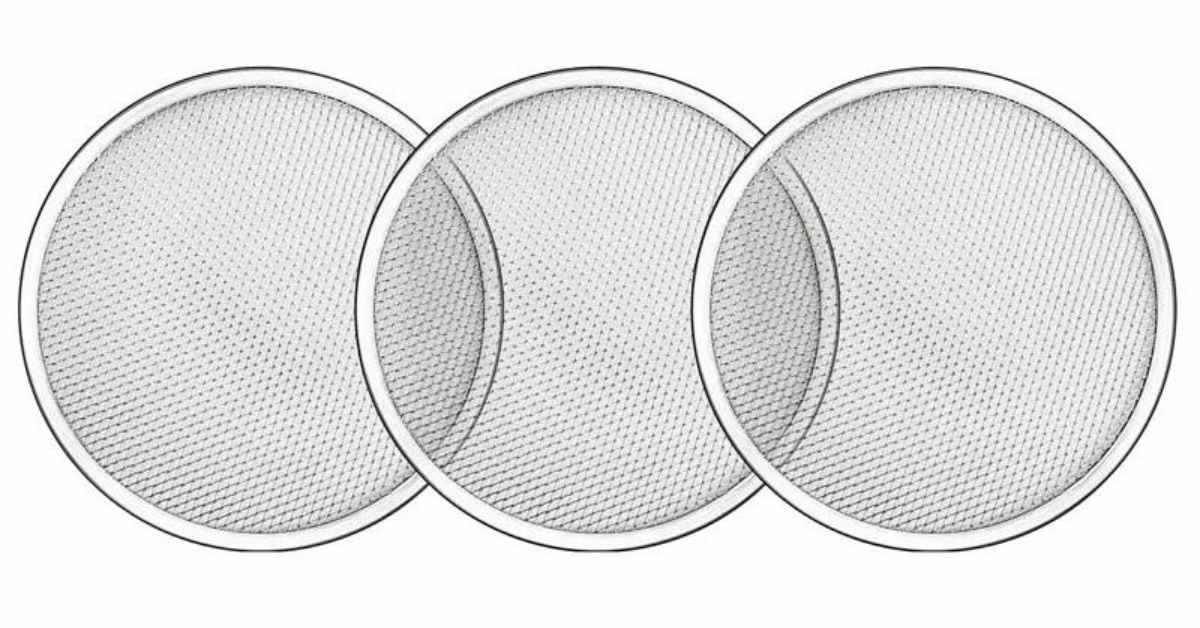In this article, we will address a common question that many rice cooker owners have: Can you put rice cooker pot in dishwasher? Cleaning kitchen appliances can sometimes be a hassle; proper cleaning methods are essential for longevity.
When it comes to rice cookers, which are frequently used and can accumulate stubborn residue, it’s essential to understand the do’s and don’ts of cleaning. Let’s dive into the topic and find out if you can safely put your rice cooker pot in the dishwasher.
Table of Contents
ToggleRice Cooker Pots: An Overview
When it comes to cooking rice, a rice cooker is an indispensable kitchen appliance for many households. These handy devices simplify the process of preparing fluffy, perfectly cooked rice with minimal effort. The rice cooker pot is at the heart of every pot, a crucial component responsible for evenly cooking the rice and ensuring its delicious texture.
Rice cooker pots are typically made of non-stick aluminum or stainless steel. The non-stick coating prevents rice from sticking to the pot’s surface, making it easier to clean after use. These pots often come with measuring lines or markings on the inside, indicating the appropriate water-to-rice ratios for different types of rice.
The size of rice cooker pots can vary depending on the model and capacity of the rice cooker. They range from small pots suitable for single servings to larger ones that cook rice for an entire family. Some rice cookers even offer removable pots, allowing for convenient serving and cleaning.
The Dishwasher and How It Works

Before delving into whether you can put a rice cooker pot in the dishwasher, let’s first look at how dishwashers function. Understanding the dishwasher’s operation will help us determine the compatibility of rice cooker pots with this cleaning appliance.
Dishwashers are designed to automate the process of washing dishes, utensils, and various kitchenware. They have several components, including a water inlet, heating element, detergent dispenser, spray arms, and a drainage system.
When you load your dirty dishes into the dishwasher and initiate a cleaning cycle, the dishwasher begins by filling itself with hot water from the water inlet. The heating element then raises the water temperature to the desired level, ensuring effective cleaning and sanitization.
Once the water reaches the appropriate temperature, the dishwasher releases detergent from the dispenser. The detergent mixes with the hot water, creating a soapy solution that helps remove grease, stains, and food particles from the dishes.
The spray arms at the bottom and top of the dishwasher rotate and spray the soapy water onto the dishes, ensuring a thorough cleaning. The forceful spray dislodges any stuck-on debris, while the strategically positioned jets reach every nook and cranny, providing a comprehensive clean.
After cleaning, the dishwasher drains the dirty water and rinses the dishes with fresh water to remove any remaining detergent residue. Finally, hot air or a fan assists in drying the dishes, leaving them ready to be unloaded and put away.
Now that we understand how dishwashers work, let’s move on to the main question: Can you put rice cooker pot in dishwasher?
Can You Put Rice Cooker Pot in Dishwasher
Now, let’s address the question owners often ask: Can you put a rice cooker pot in dishwasher? The answer to this question depends on the specific rice cooker and its manufacturer’s guidelines.
While some rice cooker pots are labeled dishwasher-safe, it’s important to note that not all can withstand the harsh conditions inside a dishwasher. Dishwashers use high water temperatures, powerful jets, and detergent to clean dishes, which may only be suitable for some rice cooker pots.
To determine whether your rice cooker pot is dishwasher-safe, consult the user manual or the manufacturer’s instructions. These guidelines provide valuable information on cleaning and maintaining your specific rice cooker model, including whether the pot is safe to be placed in the dishwasher.
If your rice cooker pot is labeled dishwasher-safe, the pot has been tested and deemed capable of withstanding the dishwasher’s cleaning process without experiencing any damage or degradation. In this case, you can confidently place the pot in the dishwasher for convenient cleaning.
However, if the user manual or manufacturer’s instructions explicitly state that the rice cooker pot should not be put in the dishwasher, it is crucial to follow these guidelines. Ignoring these instructions may damage the pot’s non-stick coating, causing it to warp or lose shape or other undesirable consequences.
In cases where your rice cooker pot is not dishwasher-safe, don’t worry! There are alternative methods to clean it effectively. You can handwash the pot using warm soapy water and a gentle sponge or cloth. This method gives you more control over the cleaning process and ensures the longevity of your rice cooker pot.
Remember, the goal is to maintain the quality and functionality of your rice cooker pot while keeping it clean and hygienic for future use.
Using the Dishwasher to Clean Your Rice Cooker Pot
While it’s essential to check the manufacturer’s instructions and determine if your rice cooker pot is dishwasher-safe, let’s explore the steps involved in using the dishwasher to clean a rice cooker pot for those pots deemed dishwasher-safe.
- Preparing the rice cooker pot: Before placing it in the dishwasher, ensure it is empty and free from any leftover rice or debris. Please rinse it under running water to remove any loose particles.
- Load the rice cooker pot securely: To prevent any potential damage during the dishwasher cycle, securely place the rice cooker pot in the dishwasher rack. Avoid overcrowding the dishwasher, which can hinder proper water circulation and result in ineffective cleaning.
- Check dishwasher settings: Set the dishwasher to a gentle or delicate cycle to minimize the risk of any damage to the rice cooker pot. Avoid intense or high-temperature cycles, which may compromise the pot’s non-stick coating.
- Skip the drying cycle: It’s generally recommended to skip it when cleaning the rice cooker pot in the dishwasher. Instead, let the pot air dry naturally or gently pat it dry with a clean towel after the dishwasher cycle.
- Inspect and reassemble: Once the dishwasher cycle is finished, carefully remove the rice cooker pot and inspect it for any signs of damage. Check if the non-stick coating is intact and the pot has maintained its shape. If any issues are detected, discontinue using the dishwasher for cleaning the pot and opt for handwashing instead.
- Reassemble the rice cooker: Once the rice cooker pot is clean and dry, reassemble it with its other components, such as the inner lid, steam vent, or measuring cup, according to the manufacturer’s instructions.
Remember, these steps only apply if your rice cooker pot is confirmed to be dishwasher-safe. Always prioritize following the manufacturer’s guidelines to ensure your rice cooker pot’s longevity and proper functioning. If in doubt, resort to handwashing as a safe alternative.
Cleaning a Rice Cooker Pot by Hand

For rice cooker pots that are not dishwasher-safe or for those who prefer handwashing as their preferred cleaning method, here is a step-by-step guide to effectively clean your rice cooker pot by hand.
- Cool down the rice cooker pot: Allow the rice cooker pot to cool down completely before starting the cleaning process. Attempting to clean a hot pot can not only be dangerous but may also make it more challenging to remove stubborn residue.
- Soak the pot: Fill the rice cooker pot with warm water and a few drops of mild dishwashing liquid. Let it soak for a few minutes to loosen any stuck-on rice or residue. The warm water helps to soften the residue, making it easier to clean.
- Scrub gently: Use a non-abrasive sponge or soft brush to gently scrub the rice cooker pot. Pay attention to the bottom and sides of the pot, as these areas tend to accumulate the most stubborn residue. Avoid using harsh scrubbing pads or abrasive cleaners, as they can scratch the non-stick coating of the pot.
- Pay attention to crevices: For intricate areas like the steam vent or crevices in the pot’s design, use a small, soft brush or a toothbrush to ensure thorough cleaning. These areas can trap food particles, so giving them extra attention will help maintain hygiene.
- Rinse thoroughly: Rinse the rice cooker pot thoroughly with warm water after scrubbing. Ensure that all traces of soap and residue are removed. Any soap residue left on the pot may affect the taste and quality of the cooked rice.
- Dry completely: Towel dry the rice cooker pot or let it air dry completely before reassembling or storing it. Moisture left on the pot can lead to bacteria or mold growth.
By following these steps, you can effectively clean your rice cooker pot by hand, ensuring its longevity and performance for years. Remember to refer to the manufacturer’s instructions for specific cleaning recommendations for your rice cooker model.
Alternatives to Using the Dishwasher
If your rice cooker pot is not dishwasher-safe or you prefer alternative cleaning methods, there are several effective alternatives to using the dishwasher. Here are some options to consider:
Handwashing with warm soapy water:
The most common and reliable method is washing the rice cooker pot using warm water and mild dishwashing liquid. Scrub the pot gently with a non-abrasive sponge or soft brush, paying attention to any stubborn residue. Rinse thoroughly and dry completely before reassembling or storing.
Soaking with baking soda:
Soaking the pot in warm water and baking soda can help loosen the debris for pots with tough stains or stuck-on residue. Add a few tablespoons of baking soda to warm water, submerge the pot, and let it soak for two hours or overnight. Then, scrub and rinse as usual.
Vinegar solution:
Another natural cleaning method is to use a vinegar solution. Mix equal white vinegar and water in a basin or sink, and soak the rice cooker pot for a few hours. The acidity of the vinegar helps dissolve grease and residue. After soaking, scrub and rinse the pot thoroughly.
Lemon juice:
The natural acidity of lemon juice can also effectively remove stains and odors from the rice cooker pot. Squeeze the juice of a lemon into warm water, and soak the pot for a while. Scrub and rinse well afterward.
Steam cleaning:
Some rice cooker pots are compatible with steam cleaning methods. Place the pot on the stovetop and let steam from boiling water loosen any residue. After steaming, carefully scrub and rinse the pot.
Always check the manufacturer’s instructions or user manual for specific cleaning recommendations for your rice cooker pot. Some pots may have unique cleaning requirements or restrictions that should be followed to ensure their longevity and performance.
By utilizing these alternatives, you can effectively clean your rice cooker pot without using a dishwasher, maintaining its cleanliness and functionality.
Risks and Safety Considerations
When cleaning your rice cooker pot, there are a few risks and safety considerations. By being aware of these factors, you can ensure the safety of yourself and your rice cooker pot. Here are some essential points to consider:
Hot surfaces: Rice cooker pots can retain heat even after cooking, so always allow the pot to cool down before handling or cleaning it. Attempting to clean a hot pot can lead to burns or injuries.
Non-stick coating: Take care not to use abrasive materials, harsh scrubbers, or abrasive cleaners on the non-stick coating of the rice cooker pot. Scratching or damaging the non-stick surface can reduce its effectiveness and lead to food sticking to the pot.
Manufacturer’s instructions: Always refer to the manufacturer’s instructions or user manual for specific cleaning guidelines. Following these guidelines ensures that you clean the rice cooker pot in a way that maintains its quality and doesn’t void warranties.
Dishwasher compatibility: If your rice cooker pot is labeled dishwasher-safe, you can use the dishwasher for cleaning. However, if it is not recommended for the dishwasher, avoid placing it in the dishwasher to prevent potential damage.
Cleaning agents: Use mild dishwashing liquid or cleaning solutions recommended by the manufacturer when handwashing the rice cooker pot. Avoid harsh chemicals or abrasive cleaners, which can damage the pot’s surface.
Maintenance and inspection: Regularly inspect your rice cooker pot for signs of damage, such as peeling, non-stick coating, or warping. If any damage is detected, discontinue using the pot and consider replacing it to ensure safe and hygienic cooking.
By being cautious and following these safety considerations, you can clean your rice cooker pot effectively while maintaining its integrity and safety for future use.
Frequently Asked Questions
Can you wash a rice cooker pot?
Yes, rice cooker pots can be washed. However, it’s essential to check the manufacturer’s instructions to determine the recommended cleaning method for your specific rice cooker pot.
Is Tiger rice cooker pot dishwasher safe?
Tiger rice cooker pots are often dishwasher-safe. However, it is best to refer to the manufacturer’s instructions or user manual to confirm the dishwasher compatibility of your specific Tiger rice cooker pot.
Is Zojirushi rice cooker pot dishwasher safe?
Zojirushi rice cooker pots are typically dishwasher-safe. To be specific, it is advisable to consult the manufacturer’s instructions or user manual for your particular Zojirushi rice cooker model.
How often should you clean your rice cooker pot?
It is generally recommended to clean your rice cooker pot after each use. Regular cleaning helps prevent the buildup of residue, stains, and odors, ensuring optimal performance and longevity of the pot.
How do you remove stains from a rice cooker pot?
To remove stains from a rice cooker pot, try soaking them in warm water and baking soda, vinegar solution, or lemon juice. Scrub gently with a non-abrasive sponge or soft brush to lift the stains. Always rinse thoroughly afterward.
Can you use dish soap to clean a rice cooker pot?
Use mild dishwashing liquid or soap to clean a rice cooker pot. Choosing a mild soap and avoiding harsh chemicals or abrasive cleaners that could damage the pot’s non-stick coating is advisable.
Conclusion
Properly cleaning and maintaining your rice cooker pot ensures longevity, performance, and safety. Whether you choose to use the dishwasher (if deemed dishwasher-safe) or opt for handwashing, following the manufacturer’s instructions is crucial. Be mindful of the risks and safety considerations, such as hot surfaces and non-stick coating protection.
If your pot is not dishwasher-safe, alternative methods like soaking with baking soda or vinegar solutions can effectively remove stains. Regular cleaning, inspection for damage, and adhering to recommended cleaning agents will help keep your rice cooker pot in optimal condition. You can continue enjoying deliciously cooked rice for years by caring for your rice cooker pot.






